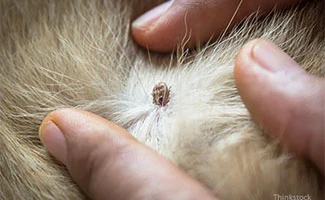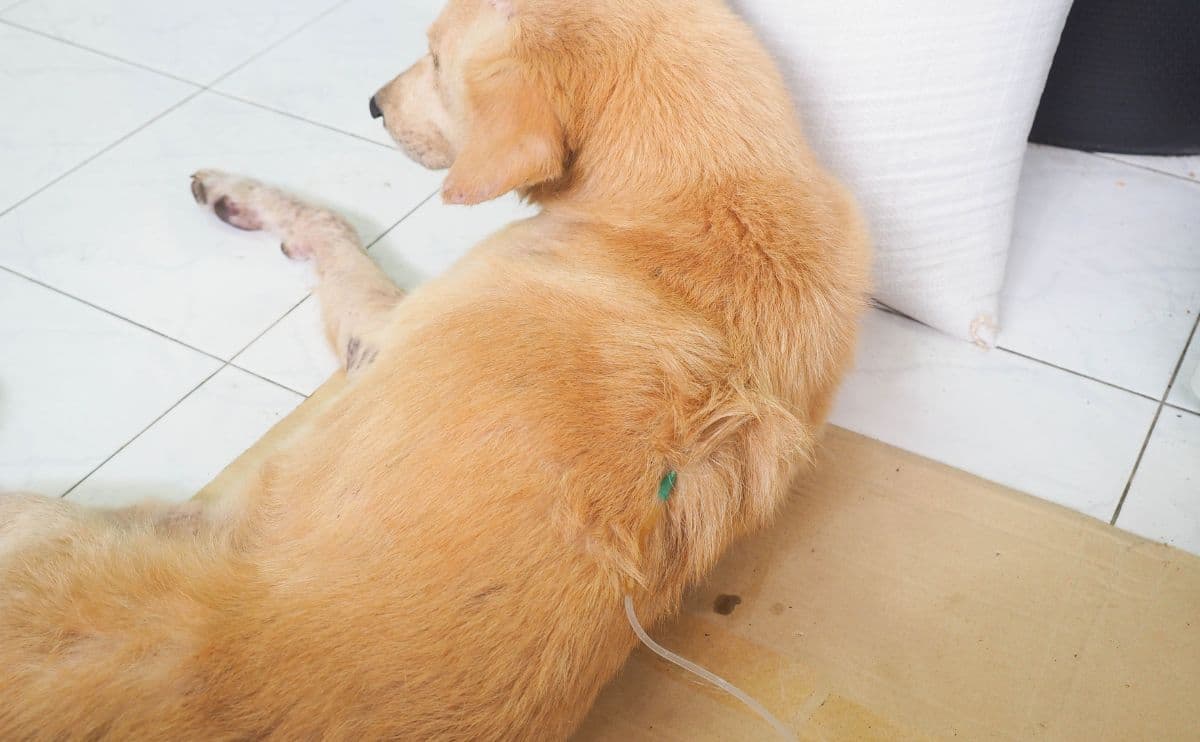When you purchase through links on our site, we may earn a commission. Here’s how it works.

You’re probably familiar with them on people, but can dogs get skin tags? Yes, our canine companions do get skin tags — and just like with humans, it’s usually not a serious health concern. But it’s still important to know the difference between skin tags and other growths and what to do about them. In some cases, skin tags do require treatment.
What Are Skin Tags On Dogs?
Skin tags are benign (non-cancerous) growths of fleshy tissue that appear as small lumps or bumps. They occur more often in middle-aged and senior dogs. And they seem to be more prevalent in larger breeds and certain breeds, like Cocker Spaniels and Boxers. Veterinarians use various medical terms to describe skin tags: acrochordon, fibrovascular papilloma, fibroepithelial polyp, or soft fibroma.
What Does A Skin Tag Look Like On A Dog?
Skin tags on dogs are typically located on the skin’s surface and vary in size and shape. Most often, they’re small (under one centimeter), thin, soft, and flesh-colored. Some are attached to the skin with a stalk of very narrow tissue. Some skin tags don’t change much over time, but some can slowly grow much larger. Identifying skin tags can be tricky for pet parents — they can easily be confused for a tick, a wart, or another type of growth.
Dog Skin Tag Or Tick

Upon first sight, you may think your dog’s skin tag is an embedded tick and just try to remove it quickly. But it’s important to inspect it first to tell the difference because yanking off a skin tag can be painful and cause bleeding. Skin tags are usually the same color as your dog’s skin, while ticks are usually dark brown or gray.
Of course, if your dog has black or dark-colored skin or fur, it can be harder to differentiate between a skin tag and a tick. In this case, you can use a magnifying glass to spot the difference — you should be able to see a tick’s legs, which will move if you touch it with a gloved hand. Also, ticks usually get larger quickly as they feed, while skin tags don’t grow as fast.
Dog Wart vs Skin Tag
Warts and skin tags on dogs can look quite similar. The major difference is that warts usually have a thick base underneath them, while skin tags have a thinner base and often dangle from the skin. Warts are also harmless and typically clear up in a few weeks.
Other Skin Growths
Both benign and malignant (cancerous) skin growths can appear in many different shapes and sizes, and some can resemble skin tags. Skin tags aren’t cancer, but you want to ensure that what you’re seeing on your dog is a skin tag rather than something more serious. That’s why it’s so important to see your veterinarian anytime you notice a new skin growth.
What Causes Skin Tags On Dogs?
So, why do dogs get skin tags? The cause of skin tags on dogs is unknown. However, some theorize that friction or frequent irritation plays a part in their development. That’s why you can often find them in armpits, upper legs, face, lower chest, and abdomen. But they can develop anywhere on a dog’s body, including on eyelids, lips, ears, chin, etc.
Signs That A Skin Tag Could Be A Problem
Although a skin tag is usually harmless, you should monitor it for any changes. If you notice any of the following, you should get your pup examined by your vet.
- Changes in size or color
- Bleeding or discharge
- Blood-filled skin tag
- Excessive itching or licking of the growth
- Other signs that it may be bothering your pup
- More tags forming in the same spot
Depending on the skin tag’s size and where it’s located, it may get caught on objects, causing bleeding or pain. If you notice this with your pup, talk to your vet. Removal may be recommended if the tag is causing your dog discomfort.
Treatment
Your veterinarian will examine your pup’s skin growth to determine if it’s a skin tag or another type of mass. If it’s a skin tag, your vet may recommend removal. What does this involve? A small skin tag may be removed by cutting or freezing it off using a local anesthetic to ensure the procedure doesn’t cause your pup any pain. If the skin tag is large or in a particularly sensitive area, your vet may use general anesthesia.
How To Remove Skin Tags On Dogs
If you’re wondering how to remove skin tags on dogs yourself, the simple answer is don’t ever try to remove a skin tag on your own. First, this could result in unnecessary pain, bleeding, and a risk of infection. Second, if the growth isn’t a skin tag, you could create more problems for your pup’s health.
The video below is a perfect example of why you should seek veterinary attention for your dog’s skin tag. Not only will your vet confirm that your dog does indeed have a skin tag, but he or she will also determine the best removal procedure.
Other Types Of Bumps On A Dog’s Skin
What you may suspect is a skin tag could be another type of lump or bump. Dogs are prone to so many skin issues, so it’s important to be informed about lumps on your dog’s skin, as well as signs of dog tumors. As we said above, when you spot a new skin growth on your dog, it’s important to have your vet examine your pup to make a correct diagnosis and treatment plan.
Tagged With: Skin

